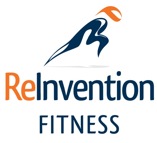Knee Pain and What to Do About It (Part 2)
In the previous article, I mentioned that the root cause of 95% of knee pain is not muscle weakness around the knee or the knee joint itself.
One of the biggest causes of knee pain is poor hip control and a lack of hip strength, which then result in more stress at the knee.
If you get better control of the hips and learn how to use them the stress on the knees drops significantly.
It’s almost like magic, and once you experience the difference, you’ll never approach training your lower body the same way again.
But there is a second factor involved in knee pain that’s almost as common as poor hip control… and that’s overly stiff quadriceps (thigh) muscles.
I see this a lot, and sitting at home more during the pandemic is making it more common.
Here’s how this problem manifests:
When you drop down into a squat, lunge, or step down from something, some of your thigh muscles need to continue to contract but elongate at the same time to control the movement.
It’s call an “eccentric” contraction.
To better visualize this, think of doing a biceps dumbbell curl — as you curl the weight up, your biceps muscle contracts and shortens, and when you lower the weight, the muscle is still contracting but elongating so that you can control the weight going down.
Your thigh muscles work the same way when you lower down into a squat, lunge, or step.
But…. the eccentric control on the way down is dependent on your brain knowing how to fire the muscles to control the movement.
If your brain doesn’t understand how to control the muscle, it likely won’t let it elongate much, and that effectively creates stiffness….. and stiffness in a quad muscle results in the kneecap being pulled upward when you move downward (some of you might have seen this in your knee x-rays) and that results in pain.
Over time, stiffness and holding too much “tone” in the thigh muscles becomes the norm.
Ironically, the stiffness will feel totally normal to you…. except for the pain in your knees.
Learning to use the hips better does allow the thighs to gradually let go over time, but there is something else you can do to speed this process up.
Foam Rolling Front Quadriceps
Foam Rolling Lateral Quadriceps


